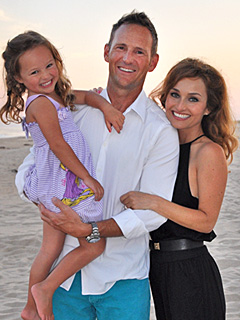The iEconomy: Factory Upgrade:
Change comes to factories in China.
CHENGDU, China — One day last summer, Pu Xiaolan was halfway through a shift inspecting iPad cases when she received a beige wooden chair with white stripes and a high, sturdy back.
At first, Ms. Pu wondered if someone had made a mistake. But when her bosses walked by, they just nodded curtly. So Ms. Pu gently sat down and leaned back. Her body relaxed.
The rumors were true.
When Ms. Pu was hired at this Foxconn plant a year earlier, she received a short, green plastic stool that left her unsupported back so sore that she could barely sleep at night. Eventually, she was promoted to a wooden chair, but the backrest was much too small to lean against. The managers of this 164,000-employee factory, she surmised, believed that comfort encouraged sloth.
But in March, unbeknown to Ms. Pu, a critical meeting had occurred between Foxconn’s top executives and a high-ranking Apple official. The companies had committed themselves to a series of wide-ranging reforms. Foxconn, China’s largest private employer, pledged to sharply curtail workers’ hours and significantly increase wages — reforms that, if fully carried out next year as planned, could create a ripple effect that benefits tens of millions of workers across the electronics industry, employment experts say.
Other reforms were more personal. Protective foam sprouted on low stairwell ceilings inside factories. Automatic shut-off devices appeared on whirring machines. Ms. Pu got her chair. This autumn, she even heard that some workers had received cushioned seats.
The changes also extend to California, where Apple is based. Apple, the electronics industry’s behemoth, in the last year has tripled its corporate social responsibility staff, has re-evaluated how it works with manufacturers, has asked competitors to help curb excessive overtime in China and has reached out to advocacy groups it once rebuffed.
Executives at companies like Hewlett-Packard and Intel say those shifts have convinced many electronics companies that they must also overhaul how they interact with foreign plants and workers — often at a cost to their bottom lines, though, analysts say, probably not so much as to affect consumer prices. As Apple and Foxconn became fodder for “Saturday Night Live” and questions during presidential debates, device designers and manufacturers concluded the industry’s reputation was at risk.
“The days of easy globalization are done,” said an Apple executive who, like many people interviewed for this article, requested anonymity because of confidentiality agreements. “We know that we have to get into the muck now.”
Even with these reforms, chronic problems remain. Many laborers still work illegal overtime and some employees’ safety remains at risk, according to interviews and reports published by advocacy organizations.
But the shifts under way in China may prove as transformative to global manufacturing as the iPhone was to consumer technology, say officials at over a dozen electronics companies, worker advocates and even longtime factory critics.
“This is on the front burner for everyone now,” said Gary Niekerk, a director of corporate social responsibility at Intel, which manufactures semiconductors in China. No one inside Intel “wants to end up in a factory that treats people badly, that ends up on the front page.”
The durability of many transformations, however, depends on where Apple, Foxconn and overseas workers go from here. Interviews with more than 70 Foxconn employees in multiple cities indicate a shift among the people on iPad and iPhone assembly lines. The once-anonymous millions assembling the world’s devices are drawing lessons from the changes occurring around them.
As summer turned to autumn and then winter, Ms. Pu began to sign up for Foxconn’s newly offered courses in knitting and sketching. At 25 and unmarried, she already felt old. But she decided that she should view her high-backed chair as a sign. China’s migrant workers are, in a sense, the nation’s boldest risk-takers, transforming entire industries by leaving their villages for far-off factories to power a manufacturing engine that spans the globe.
Ms. Pu had always felt brave, and as this year progressed and conditions inside her factory improved, she became convinced that a better life was within reach. Her parents had told her that she was free to choose any husband, as long as he was from Sichuan. Then she found someone who seemed ideal, except that he came from another province.
Reclining in her new seat, she decided to ignore her family’s demands, she said. The couple are seeing each other.
“There was a change this year,” she said. “I’m realizing my value.”
An Inspector’s Push
“This is a disgrace!” shouted Terry Gou, founder and chairman of Foxconn, the world’s largest electronics manufacturer and Apple’s most important industrial partner.










